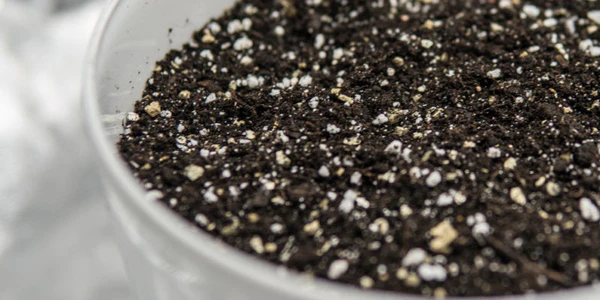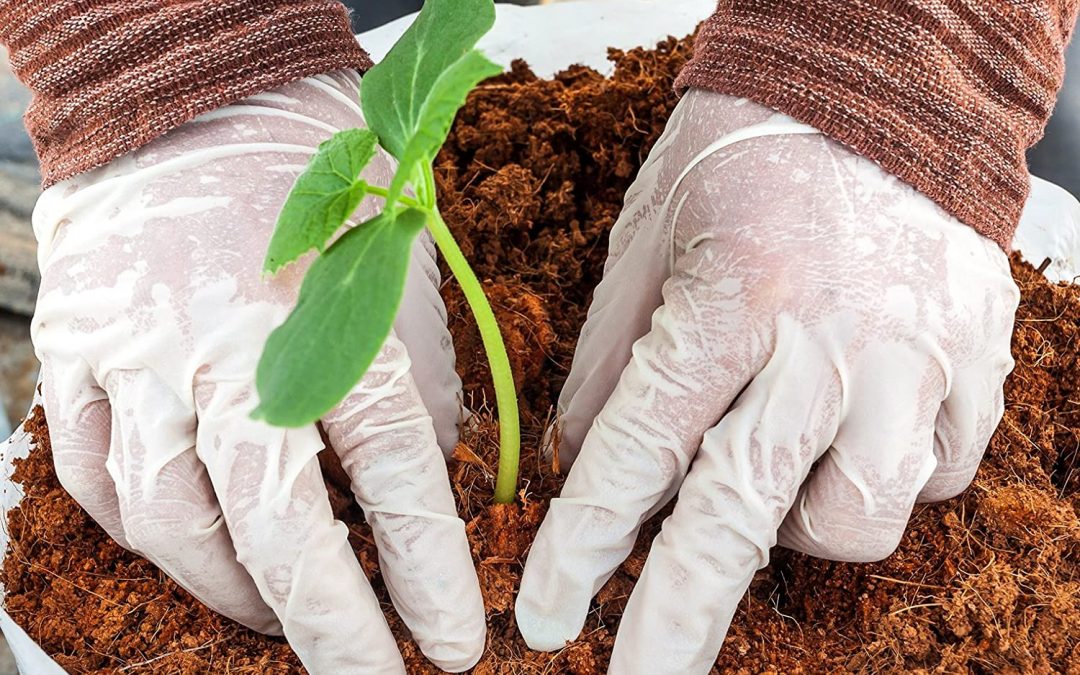Contents
- 1 Best Indoor Plant Soil Mix (Perfect Texture for Healthy Roots)
- 1.1 Why the Right Soil Mix Matters
- 1.2 What Makes a Perfect Indoor Soil Mix?
- 1.3 1. The Base Material (Structure & Retention)
- 1.4 2. Aeration Additives (Drainage & Oxygen)
- 1.5 3. Nutrient Boosters (Plant Health)
- 1.6 Best Ratios by Plant Type
- 1.7 DIY Soil Mix vs. Store-Bought
- 1.8 Common Soil Problems and How to Fix Them
- 1.9 Long-Term Soil Care Tips
- 1.10 FAQs About Indoor Plant Soil
- 1.11 Final Thoughts on the Best Indoor Plant Soil Mix
- 2 Prevent Root-Bound Plants Indoors
Best Indoor Plant Soil Mix (Perfect Texture for Healthy Roots)
KEEP YOUR ROOTS HAPPY & YOUR PLANTS THRIVING
Finding the best indoor plant soil mix can make the difference between a lush, healthy houseplant and one that slowly fades away. The right soil keeps moisture balanced, roots aerated, and nutrients flowing—everything your indoor garden needs to thrive.
Why the Right Soil Mix Matters
Indoor plants live in a confined environment. They can’t stretch their roots deep into the ground or rely on natural rainfall to refresh the soil. Instead, the potting mix is their entire world—their air, food, and hydration source all in one.
When the mix is balanced, plants grow faster, resist pests, and stay green year-round. But if it’s too dense or nutrient-poor, problems like root rot, yellowing leaves, and slow growth quickly appear.
So before buying another fertilizer or repotting in a hurry, take a closer look at your soil—it’s usually the root of the problem.
For better water flow and root oxygen, see Improve Indoor Plant Drainage.
What Makes a Perfect Indoor Soil Mix?
A good indoor soil mix should mimic the balance found in nature—enough organic matter to hold water, enough coarse texture to drain freely, and plenty of oxygen around the roots.
Think of it as a three-part recipe: structure, air, and nutrients.
1. The Base Material (Structure & Retention)
This forms about 50–60% of your mix and determines how long water stays in the pot.
Coco Coir: A sustainable alternative to peat moss. It holds moisture evenly without staying soggy and improves soil texture.
Peat Moss: Retains moisture well but isn’t renewable; mix with perlite to lighten it.
Compost: Adds nutrients and beneficial microbes. Use sterilized compost to avoid pests.
🪴 Pro Tip: Always pre-moisten coco coir before use—it expands and blends more evenly.
2. Aeration Additives (Drainage & Oxygen)
Without airflow, roots can’t breathe. Add one or more of these to prevent waterlogging:
Perlite: Lightweight, porous, and perfect for tropicals.
Pumice: Heavier and reusable—great for larger plants or bonsai.
Vermiculite: Retains some moisture but stays light, ideal for humidity-loving ferns.
Coarse Sand: Adds weight and structure for succulents.
Together, these materials ensure your roots stay oxygenated even after watering.

3. Nutrient Boosters (Plant Health)
Even with good texture, soil loses nutrients over time. Mixing slow-release organics gives your plants a head start.
Worm Castings: Rich in nitrogen and beneficial bacteria.
Composted Bark: Improves airflow and slowly feeds roots.
Slow-Release Fertilizer Pellets: Keep feeding consistent for up to 3 months.
You can find premium worm castings, organic compost bark, and slow-release fertilizer pellets on Amazon—perfect for maintaining nutrition naturally.
Best Ratios by Plant Type
| Plant Type | Ideal Mix Ratio | Description |
|---|---|---|
| Tropicals (pothos, monstera) | 50% coco coir / 25% compost / 25% perlite | Holds moisture without being heavy. |
| Succulents & Cacti | 40% sand / 40% perlite / 20% compost | Extremely fast-draining for dry roots. |
| Ferns & Calatheas | 60% coco coir / 20% compost / 20% vermiculite | Loves moisture and high humidity. |
| Bonsai & Ficus | 40% akadama / 30% pumice / 30% lava rock | Ideal for precision watering control. |
💧 Always water new soil mixes slowly the first time to test drainage speed.
DIY Soil Mix vs. Store-Bought
💪 DIY Soil Mix Benefits
Full control over texture and nutrients.
Customizable for each plant species.
More eco-friendly when using coco coir or composted bark.
🪴 Store-Bought Mix Benefits
Quick and consistent results.
Often includes fertilizer and moisture-control crystals.
Great for beginners or time-poor gardeners.
If convenience matters, look for mixes like FoxFarm Ocean Forest, Espoma Organic Houseplant Mix, or Miracle-Gro Indoor Potting Mix—each offers excellent aeration and a neutral pH.
Common Soil Problems and How to Fix Them
Even the best soil degrades over time. Watch for these signs your mix needs refreshing:
1. Water Sits on the Surface
Soil is compacted—roots can’t breathe.
➡️ Fix: Loosen the top inch, then repot with 20–30% perlite added.
2. Mold or Fungus Growth
Too much moisture and poor airflow.
➡️ Fix: Add perlite, increase light, and use a gentle fungicide.
3. White Crust on Soil
Salt buildup from fertilizer or hard water.
➡️ Fix: Flush the soil monthly with distilled water.
4. Plants Still Struggle Despite Fertilizing
Nutrient lockout from old, acidic mix.
➡️ Fix: Refresh soil completely or mix with 50% new compost.
💡 To keep your plants healthier between changes, learn How to Refresh Old Potting Mix Without Replacing It.
The Spruce – How to Choose the Right Potting Soil
Long-Term Soil Care Tips
✅ 1. Rotate Soil Additives
Alternate between worm castings and compost every few months for a richer microbial base.
✅ 2. Add Drainage Layers
A thin layer of clay pebbles or gravel at the bottom helps keep water flowing freely.
✅ 3. Check pH Once a Year
Most indoor plants prefer slightly acidic soil (pH 6.0–6.8). Use a simple pH meter to keep things balanced.
✅ 4. Re-Energize Old Soil
Mix in 30% fresh material each repot to extend life.
✅ 5. Avoid Garden Soil Indoors
Outdoor soil compacts easily and introduces pests—always stick to indoor-specific mixes.

FAQs About Indoor Plant Soil
1. How often should I replace my indoor soil?
Every 12–18 months is ideal. Fast-growing plants may need it sooner.
2. Is potting soil and garden soil the same?
No—garden soil is too dense for containers and causes poor drainage.
3. Can I mix sand into regular potting soil?
Yes, but use coarse horticultural sand, not beach sand—it drains better and won’t harden over time.
4. What’s the easiest soil mix for beginners?
Equal parts coco coir, perlite, and compost—it suits almost all tropical houseplants.
Final Thoughts on the Best Indoor Plant Soil Mix
Getting your soil mix right is one of the most rewarding parts of plant care. It’s not about one “perfect recipe,” but finding the balance of air, water, and nutrients that fits your growing style.
Healthy roots mean fewer pests, stronger growth, and richer green leaves. Whether you blend your own or buy a ready-made mix, focus on texture, moisture, and renewal—and your indoor jungle will thrive.
Healthy soil equals happy plants—start building from the roots up!
Related Articles
REBUILD YOUR SOIL’S STRENGTH
Prevent Root-Bound Plants Indoors
Learn how to give your houseplants space to breathe, encourage new root growth, and extend the lifespan of your favorite indoor greens.

